- Home
- Multimedia
- Photo Gallery
- Film Cameras: A brief history, and stellar images created with it
Film Cameras: A brief history, and stellar images created with it
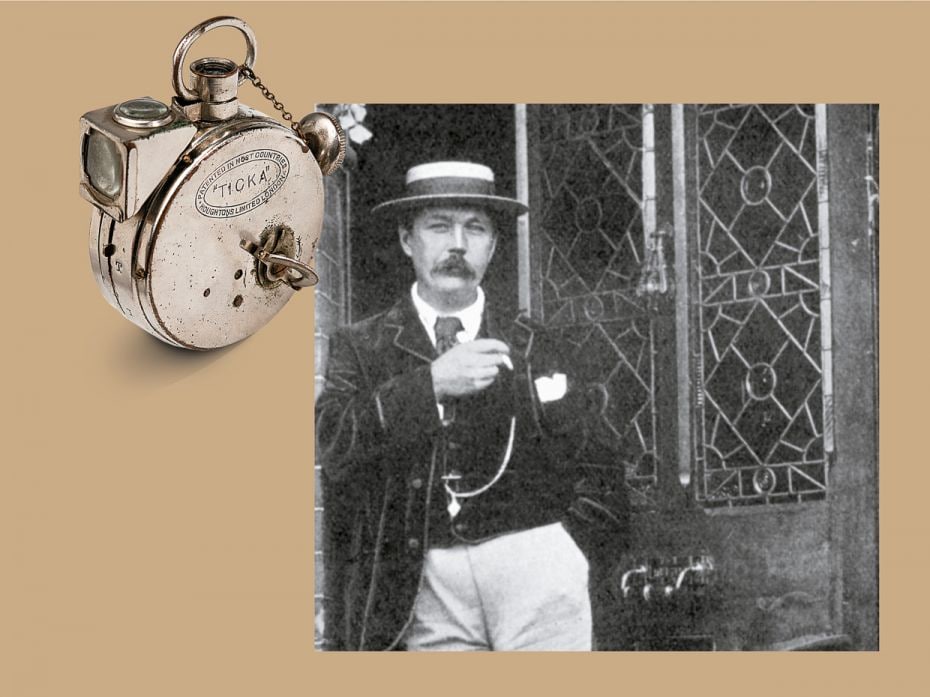
Image by : ANN RONAN PICTURES/PRINT COLLECTOR/GETTY IMAGES FORBES
TICKA WAISTCOAT POCKET CAMERA | 1904-1914
Envision someone standing on a sidewalk, appearing to check the time, while actually taking pictures! Designed to resemble a pocket watch by Magnus Niell and manufactured by Houghtons, this 17.5 mm roll film camera was produced between 1904 and 1914, and was arguably the most popular watch-type camera of all times. Only three months after its production had started in the UK, Houghtons reported that 10,000 units had already been sold. Spies, undercover police officers and private-eyes who needed a way to conceal a camera on their body, made a beeline for it. Arthur Conan Doyle, the creator of Sherlock Holmes, would certainly have been piqued. After all, it came with the promise that it would let customers “take pictures without being detected”.
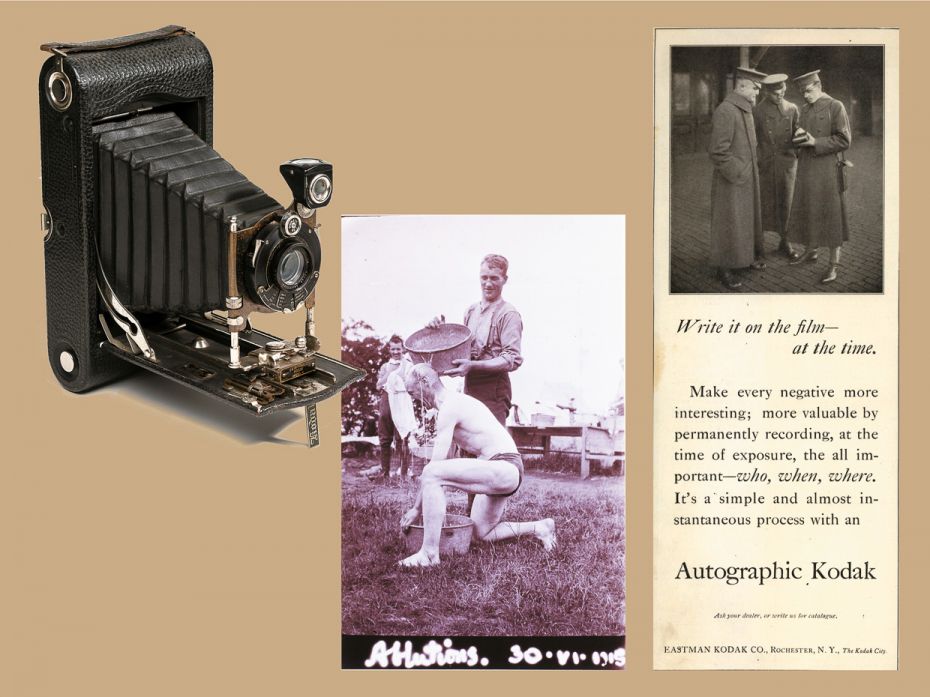
Image by : FROM LEFT: SSPL/GETTY IMAGES; COURTESY KODAK
No. 3A AUTOGRAPHIC KODAK Model C | 1914-1934
Between 1912 and 1917, a young backyard inventor by the name of Henry J Gaisman was granted several patents for photographic cameras. These improvements allowed the user to “write” a brief caption permanently on the film through a small window in the back of the camera, most importantly, at the time the picture was taken. Gaisman stated that his work arose from the fact that “it annoyed him to return from a vacation trip with pictures that he could not identify”, an irritation familiar to most of us who have taken more than a couple of snapshots. In July 1914, Eastman Kodak Ltd paid Gaisman the “remarkable” sum of $300,000 for the patent rights. Within three months, several Kodak roll-film camera models (1A, 3 and 3A) were on sale with autographic film cartridges capable of taking 10 postcard size exposures.
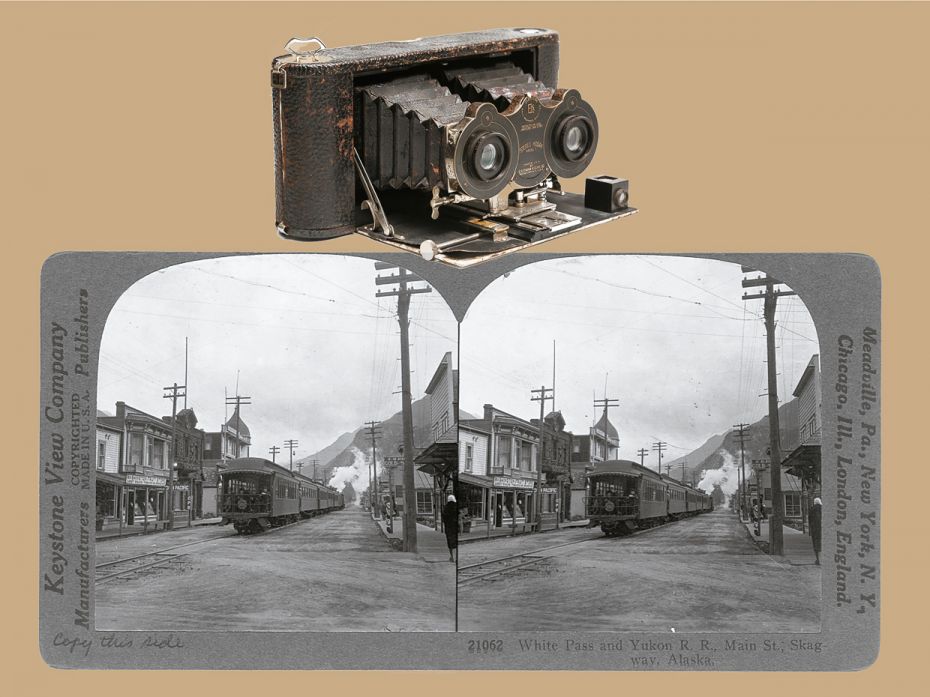
Image by : KEYSTONE VIEW COMPANY/LIBRARY OF CONGRESS/CORBIS/VCG VIA GETTY IMAGES
STEREO KODAK Model 1 | 1917-1925
This folding camera created stereographs (3D pictures) that were a rage. It had two identical lenses, separated by a distance similar to the distance between our eyes. Two photos would be taken simultaneously, mounted on a card, and viewed through a stereo viewer, which would cause the two images to fuse into one, having all the depth of the original scene. It’s actually our brain assembling the two images—each with a slightly different perspective from the other—into a three dimensional view, in a manner similar to our natural vision. The stereograph provided virtual voyaging for the emerging middle-class, peering at the canyons of the West, Egyptian camels, exotic Parisian dancers, and exploding volcanoes. Charlie Chaplin was casting about unsuccessfully for an idea for his next film, when he peered at stereographs of the Yukon. “This was a wonderful theme,” he realised, and conceived the idea of his next hit, The Gold Rush.

Image by : U.S. ARMY AIR FORCES/LIBRARY OF CONGRESS/HANDOUT VIA REUTERS
K-20 FAIRCHILD | 1941-1945
The photograph of the cataclysmic mushroom cloud from the nuclear bomb that the US dropped on the Japanese city of Hiroshima on August 6, 1945, was captured by a K-20 camera by tech sergeant George Caron, facing the rear of the aircraft as they swung away from the scene. A handheld manually operated aerial camera, used in military aircraft during World War II, the K-20 was manufactured by Folmer Graflex Corp in New York and sold about 15,000 units. A roll of special K-20 film captured 50 negatives of 4x5 inches.
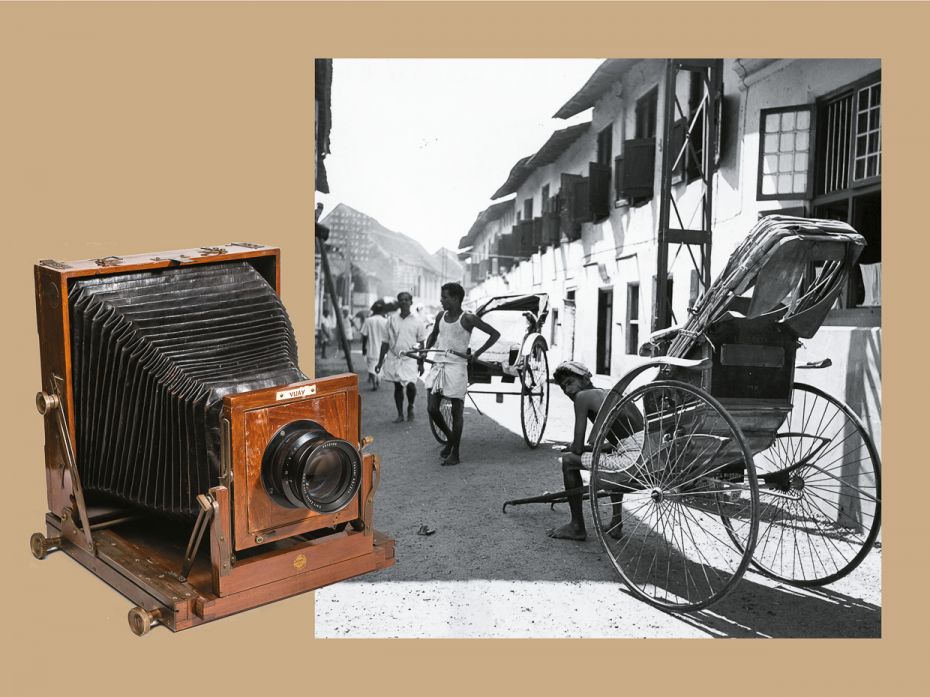
Image by : THREE LIONS/GETTY IMAGES
VAGEESWARI VIJAY | 1945-1980
It was known as one of the best field and studio cameras the world over, and was manufactured in Alappuzha, Kerala, by K Karunakaran (KK). In 1942, a studio in Alappuzha approached KK’s father Bhagavathar, a musician who also earned his living by designing and repairing musical instruments, to repair the bellows of a foreign-made field camera. Impressed with the repairs, the studio owner persuaded KK to make his own field cameras, with teak wood and brass, with the lens imported from Germany. KK set up his shop in 1945, branding it Vageeswari (one of the many names for Saraswati, the goddess of learning), sold his first camera for ₹250, and went on to rule the market for over four decades.
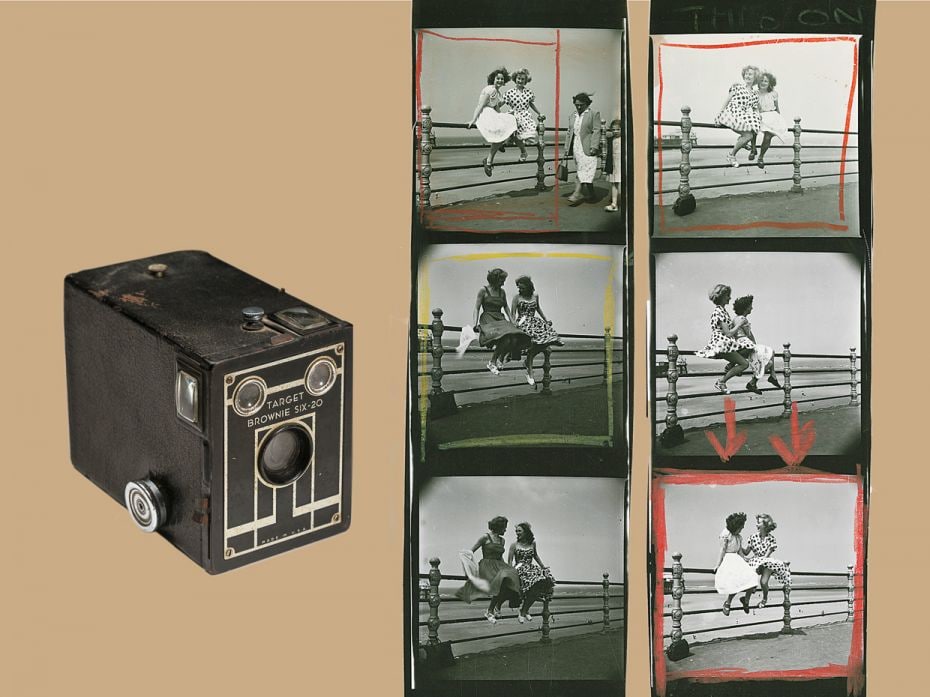
Image by : BERT HARDY/PICTURE POST/HULTON ARCHIVE/GETTY IMAGES
THE BROWNIE TARGET Six-20 | 1946-1952
It is difficult to overstate the historic importance of the first small, hand-held, simple-to-use, inexpensive box camera. Brownie touted its simplicity of use by declaring that it could be “operated by any school boy or girl”. Until then, getting a picture taken had usually been a formal, posed affair, done by a professional photographer in a studio. The Brownie gave rise to the idea of the snapshot. Having written an article in the 1940s for amateur photographers, suggesting that expensive cameras were not necessary for quality photography, Picture Post’s celebrated photographer Bert Hardy supported his argument by using a Brownie to stage a carefully posed snapshot of two young women sitting on railings above a breezy promenade in Blackpool, UK. The Brownie range became the best-selling cameras of all-time, especially the Six-20 with its easily respoolable film.
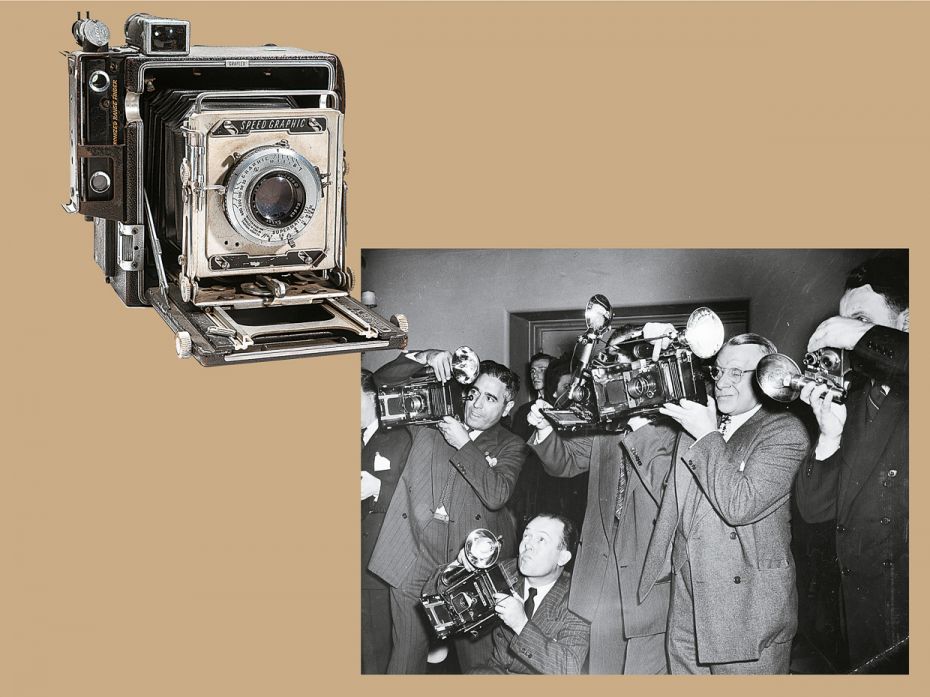
Image by : WEEGEE/INTERNATIONAL CENTER OF PHOTOGRAPHY/GETTY IMAGES
GRAFLEX Speed Graphic | 1948-1958
“Get a Speed Graphic….with a camera like that, the cops will assume that you belong on the scene and will let you get behind police lines,” said the celebrated press photographer Weegee who prowled the seedy underbelly of Manhattan’s Lower East Side at night with a Graflex and a flashbulb during the 1930s and ’40s. Truly serious photojournalists used the Graflex, despite it being a slow process that took practice. Nothing in the Graphic was automated; the operation of manually changing out each film holder, opening the shutter, cocking the focal plane, removing the dark slide, focusing the camera and releasing the focal plane could be very time consuming. If you didn’t pay attention, you could double expose, shoot blanks, fog previous exposures or shoot out of focus images, or miss a shot completely.
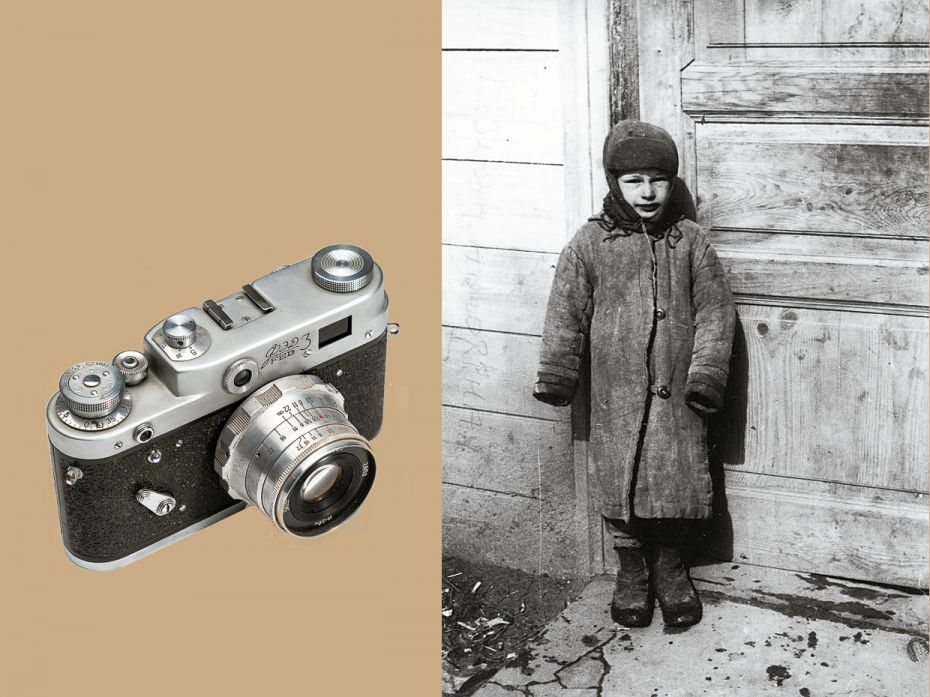
Image by : LONDON EXPRESS/GETTY IMAGES
FED 3 Type A | 1961-1963
The compact German rangefinder camera Leica had made its way to the Soviet Union by 1927 and had begun to change the habits of Soviet photographers before its import was halted. Feeling a need for the new camera, but not wanting to import it, the Russians took the only other alternative—they would make their own ‘Soviet Leica’. By the early 1930s, hundreds of Russian children had been orphaned by the Civil War, and were put to work in small workshops manufacturing portable electric hand-drills. Their small and nimble fingers were ideal for the camera’s assembly. Called the FED—after the FE Dzerzhinsky Labour Commune in Ukraine, where the children worked—the rangefinder camera was mass-produced from 1934 until around 1996.
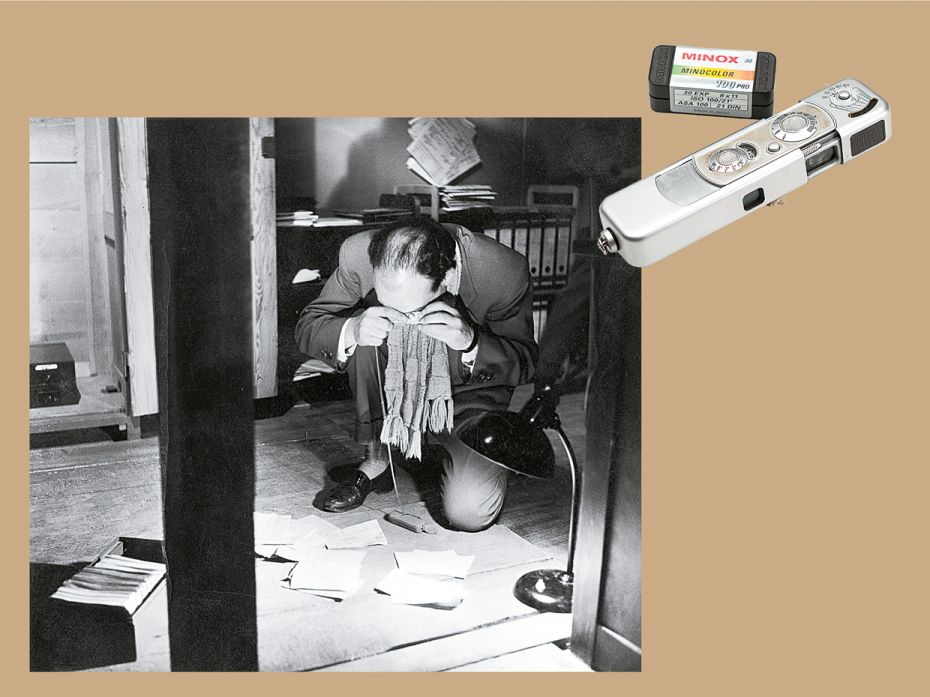
Image by : ULLSTEIN BILD VIA GETTY IMAGES
MINOX B | 1958-1972
Manufactured by Minox in Germany, this 9.5 mm film camera was the first subminiature camera with a built-in light meter that did not require batteries. For many years it was the world’s most famous and widely used camera for espionage photography right until the end of the Cold War in the early 1990s. The close-focusing lens and small size of the camera made it perfect for covert uses such as surveillance or document copying. When West German authorities arrested East German double agent Heinze Felfe in 1961, they found a dozen Minox films in his briefcase. Soviet spy Christopher John Boyce also used a later version of the camera, the Minox B, to copy top secret documents detailing the US satellite reconnaissance programme. In 1972, the Watergate scandal was recorded on Minox, which led to resignation of US President Richard Nixon.





